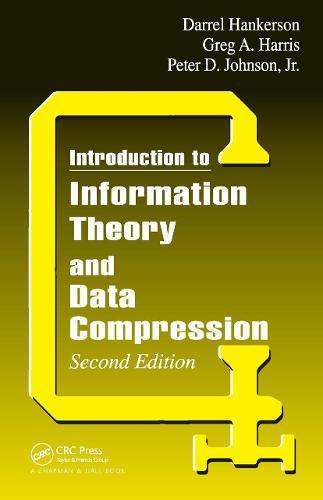Overview
An effective blend of carefully explained theory and practical applications, this text imparts the fundamentals of both information theory and data compression. Although the two topics are related, this unique text allows either topic to be presented independently, and it was specifically designed so that the data compression section requires no prior knowledge of information theory.The treatment of information theory, while theoretical and abstract, is quite elementary, making this text less daunting than many others. After presenting the fundamental definitions and results of the theory, the authors then apply the theory to memoryless, discrete channels with zeroth-order, one-state sources. The chapters on data compression acquaint students with a myriad of lossless compression methods and then introduce two lossy compression methods. Students emerge from this study competent in a wide range of techniques. The authors' presentation is highly practical but includes some important proofs, either in the text or in the exercises, so instructors can, if they choose, place more emphasis on the mathematics.I ntroduction to Information Theory and Data Compression, Second Edition is ideally suited for an upper-level or graduate course for students in mathematics, engineering, and computer science. Features: Expanded discussion of the historical and theoretical basis of information theory that builds a firm, intuitive grasp of the subject Reorganization of theoretical results along with new exercises, ranging from the routine to the more difficult, that reinforce students' ability to apply the definitions and results in specific situations. Simplified treatment of the algorithm(s) of Gallager and Knuth Discussion of the information rate of a code and the trade-off between error correction and information rate Treatment of probabilistic finite state source automata, including basic results, examples, references, and exercises Octave and MATLAB image compression codes included in an appendix for use with the exercises and projects involving transform methods Supplementary materials, including software, available for download from the authors' Web site at www dms.auburn.edu/compression
Full Product Details
Author: Peter D. Johnson Jr. ,
Greg A. Harris ,
D.C. Hankerson
Publisher: Taylor & Francis Inc
Imprint: Chapman & Hall/CRC
Edition: 2nd edition
Dimensions:
Width: 15.20cm
, Height: 2.30cm
, Length: 22.90cm
Weight: 0.680kg
ISBN: 9781584883135
ISBN 10: 1584883138
Pages: 378
Publication Date: 26 February 2003
Audience:
College/higher education
,
Professional and scholarly
,
Undergraduate
,
Professional & Vocational
Format: Hardback
Publisher's Status: Active
Availability: In Print

This item will be ordered in for you from one of our suppliers. Upon receipt, we will promptly dispatch it out to you. For in store availability, please contact us.
Reviews
Statisticians, applied mathematicians, engineers, and computer scientists will find this well-written book useful. -Journal of Statistical Computation and Simulation
Author Information
Johnson, Jr.; Harris, Greg A.; Hankerson, D.C.



